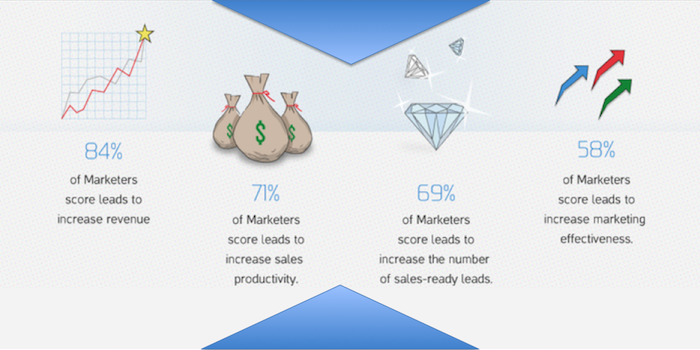Every experienced marketer knows that not all leads are worth following up on. Some potential customers are just “window shopping” and others simply aren’t a good match for our product. But do we know which ones are which? In this article, learn how to separate the wheat from the chaff to identify quality sales leads.
If you’re a marketer, perhaps you’ve found yourself wishing you had a magician’s tool to read minds, just so you could distinguish between high quality leads, and ones that aren’t worth the time.
Marketing automation has come a long way, and while it still can’t read minds, it certainly can help sift out the best leads.
Identify Quality Sales Leads
Smart marketing analytics can now go way beyond anonymous numbers on a graph and spreadsheet. It is possible to track the individual behavior of a customer on your site, find out what she’s following on social media, and what her main interests are.
Once a visitor to your site fills in a form with basic details, you can then follow his digital footprint across your entire marketing campaign.
Automation helps you identify quality sales leads in the following ways:
- You can identify areas of interest. Knowing which pages the customer visits, spends the most time on, and which ones she skips helps you understand what she is looking for – and what she isn’t looking for. This helps you target your approach to her specific needs.
- Compile unique lead scoring and grading data. Use the data from each lead’s page views, site searches, downloads and email click data to match individual profiles to the profile of your ideal prospect. The better the match, the more likely it is to translate into a sale.
- Develop unique scoring criteria, and follow-up campaigns. As you compare the effectiveness of sales campaigns, you will get to know which kinds of user behavior indicate sales-readiness, and which ones should be warmed-up in a lead nurturing campaign.
- Find the key decision maker. Your information form could include a job title, helping you further refine your scoring, and avoid wasting time. Leads with the executive decision-making power should be scored higher than the rest.
Once you’ve identified those prospects that are most likely to be lucrative, your sales team is enabled to close more deals with sales-ready leads. They can analyze each lead’s behavior, find the prospects whose needs match your brand, and offer tailored solutions to meet their needs.
Identifying the best quality sales leads is one of the most important aspects of the marketing process. When we know which leads are hot, we are able to swoop in at the most opportune time to close the deal.
How effective is your lead management process? Are you reaching out to buyers that are ready to say ‘Yes! I’m interested?’

